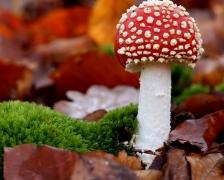[dropcap style=”font-size:100px; color:#992211;”]I[/dropcap]ncreasingly, everyone from super-cool cultural theorists to psychedelic dreamers are referring to the internet as the noosphere.
The exact origins of the term are disputed but its popularity is due to the Jesuit Palaeontologist,  Pierre Teilhard de Chardin, who defined it in The Phenomenon of Man as ‘the sphere of human thought’ (nous is Greek for ‘mind’). Just as we have a lithosphere, a hydrosphere, an atmosphere and a biosphere, so, now, we have the noosphere.
Pierre Teilhard de Chardin, who defined it in The Phenomenon of Man as ‘the sphere of human thought’ (nous is Greek for ‘mind’). Just as we have a lithosphere, a hydrosphere, an atmosphere and a biosphere, so, now, we have the noosphere.
What people using the term tend to forget is that it formed a central concept in de Chardin’s attempt to marry Christian theology with evolutionary theory. The emergence of the noosphere, he thought, was just the latest stage in our teleological progression towards the world’s culmination – the Omega Point or Christosphere, at which physical existence would cease. An idea that has found somewhat less purchase in the modern world (though its eschatology appealed to Terence McKenna, who wove it into his Timewave theory and consequent predictions for 2012. Once a Catholic, eh?).
But putting de Chardin’s peculiar theology aside, I still find myself struggling with the image of the noosphere. The whole idea of hard, disconnected spheres is too static, mechanical and Platonic, too reminiscent of medieval cosmology. The online world is, rather, dynamic, responsive, always in flux.
I think a better metaphor is to be found in biology, specifically in the mycelium, the branching, self-organising network of hyphae that constitute the ‘body’ of a fungus. (Indeed I can’t help wondering if the branching network, found everywhere from the structure of trees to the dendritic connections of the human brain, is somehow the fingerprint of life itself – though that’s another story). Just as a mycelium thickens and multiplies and grows towards resources, so a popular site or blog draws hits and connections to itself.
(Indeed I can’t help wondering if the branching network, found everywhere from the structure of trees to the dendritic connections of the human brain, is somehow the fingerprint of life itself – though that’s another story). Just as a mycelium thickens and multiplies and grows towards resources, so a popular site or blog draws hits and connections to itself.
[quote]a mycelium is rooted in substrate. The same is true of the internet[/quote]
A mycelium responds to changing circumstances, just like the emerging connections of the net. And far from being a disconnected, free-floating sphere, a mycelium is rooted in substrate. The same is true of the internet, which, however much it appears otherwise, is necessarily rooted in the world through the humans that use it and the physical resources from which it is made and sustained.
So I prefer to think of it as a noocelium instead, a mycelium of the mind. Yes, the internet is something revolutionary and new, the pinnacle perhaps of human artifice and ingenuity (perhaps more realistically a symptom of our rampant narcissism), but it’s something that rests on and is rooted in the world. Re-imagining it with such an obviously biological metaphor might just remind us that reconnecting with each other, and the world, is about the most important thing we can do right now.
Mushroom Image: Freedigitalphotos.net/Bela Kiefer
A writer and a folk musician, Andy is the author of ‘Shroom: A Cultural History of the Magic Mushroom’ and has published a range of articles and academic papers on subjects as diverse as psychedelics, paganism, bardism, environmental protest, fairies, shamanism and evolution. A modern day troubadour, he plays mandolin, writes songs, and fronts darkly crafted folk band, Telling the Bees. A leading exponent of the English Bagpipes, he plays for brythonic dancing in a trio called Wod.




















